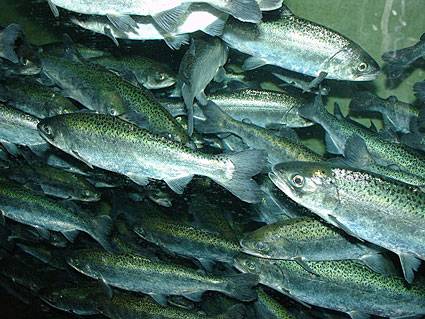You can’t save daylight by moving around the hands on your clock, of course. So daylight saving time remains as absurdly named as it ever was.
The general pointlessness of DST was the subject of a Rachel Maddow interview Friday (video below) with the author of a whole book (!) on the subject.
What’s germane here is that DST saves about as much energy as light, according to most studies. In fact, a 2008 study found DST “may actually waste energy“:
Up until two years ago, only 15 of Indiana’s 92 counties set their clocks an hour ahead in the spring and an hour back in the fall. The rest stayed on standard time all year, in part because farmers resisted the prospect of having to work an extra hour in the morning dark. But many residents came to hate falling in and out of sync with businesses and residents in neighboring states and prevailed upon the Indiana Legislature to put the entire state on daylight-saving time beginning in the spring of 2006.
Indiana’s change of heart gave University of California-Santa Barbara economics professor Matthew Kotchen and Ph.D. student Laura Grant a unique way to see how the time shift affects energy use. Using more than seven million monthly meter readings from Duke Energy Corp., covering nearly all the households in southern Indiana for three years, they were able to compare energy consumption before and after counties began observing daylight-saving time. Readings from counties that had already adopted daylight-saving time provided a control group that helped them to adjust for changes in weather from one year to the next.
Their finding: Having the entire state switch to daylight-saving time each year, rather than stay on standard time, costs Indiana households an additional $8.6 million in electricity bills. They conclude that the reduced cost of lighting in afternoons during daylight-saving time is more than offset by the higher air-conditioning costs on hot afternoons and increased heating costs on cool mornings.
“I’ve never had a paper with such a clear and unambiguous finding as this,” says Mr. Kotchen, who presented the paper at a National Bureau of Economic Research conference this month.
A 2007 study by economists Hendrik Wolff and Ryan Kellogg of the temporary extension of daylight-saving in two Australian territories for the 2000 Summer Olympics also suggested the clock change increases energy use.
The Kotchen and Grant NBER paper is here. It concludes:
We also estimate social costs of increased pollution emissions that range from $1.7 to $5.5 million per year. Finally, we argue that the effect is likely to be even stronger in other regions of the United States …
There are nevertheless several reasons we might infer that DST increases electricity demand across a much broader area. First, existing simulations suggest that DST increases electricity consumption on average over 224 different locations throughout the United States (Rock 1997). Our results also corroborate the results of such simulation exercises. Second, even when prior research finds little or no electricity savings from DST in the United States, the effect is smaller in more southern regions (DOE 2006). Finally, the fact that we identify the underlying tradeoff between artificial illumi- nation and primarily air-conditioning suggests that the DST effect that we estimate is likely to be even stronger in the more populated, southern regions of the Unites States. Further south, the days are shorter during the summer, meaning that decreases in electrical use from lighting are likely to be smaller, and air conditioning is more common and intensively used, meaning that increases in electricity for cooling are likely to be bigger.
In “13 Things You Probably Didn’t Know About Daylight-Saving Time,” U.S News notes:
Daylight-saving time was first used during World War I, as part of an effort in the United States and other warring countries to conserve fuel. In theory, using daylight more efficiently saves fuel and energy because it reduces the nation’s need for artificial light.
An Australian study concluded “These results suggest that current plans and proposals to extend DST will fail to conserve energy.”
Probably the best recent case for DST is from a 2008 Department of Energy report for Congress, which found DST saved a whopping .02 percent of the country’s total use in 2007. But Wikipedia lists a bunch of other studies on DST, most of which (but not all) come to a similar conclusion as the Australia study.
DST’s general inanity is clear in this Rachel Maddow interview of Spring Forward: The Annual Madness of Daylight-Saving Time:
[vodpod id=ExternalVideo.1012247&w=425&h=350&fv=launch%3D35846288%26width%3D400%26height%3D320]
U.S. News concludes, “When clocks spring forward, people lose sleep, have more heart attacks, and might not even save energy.”
Enjoy!




